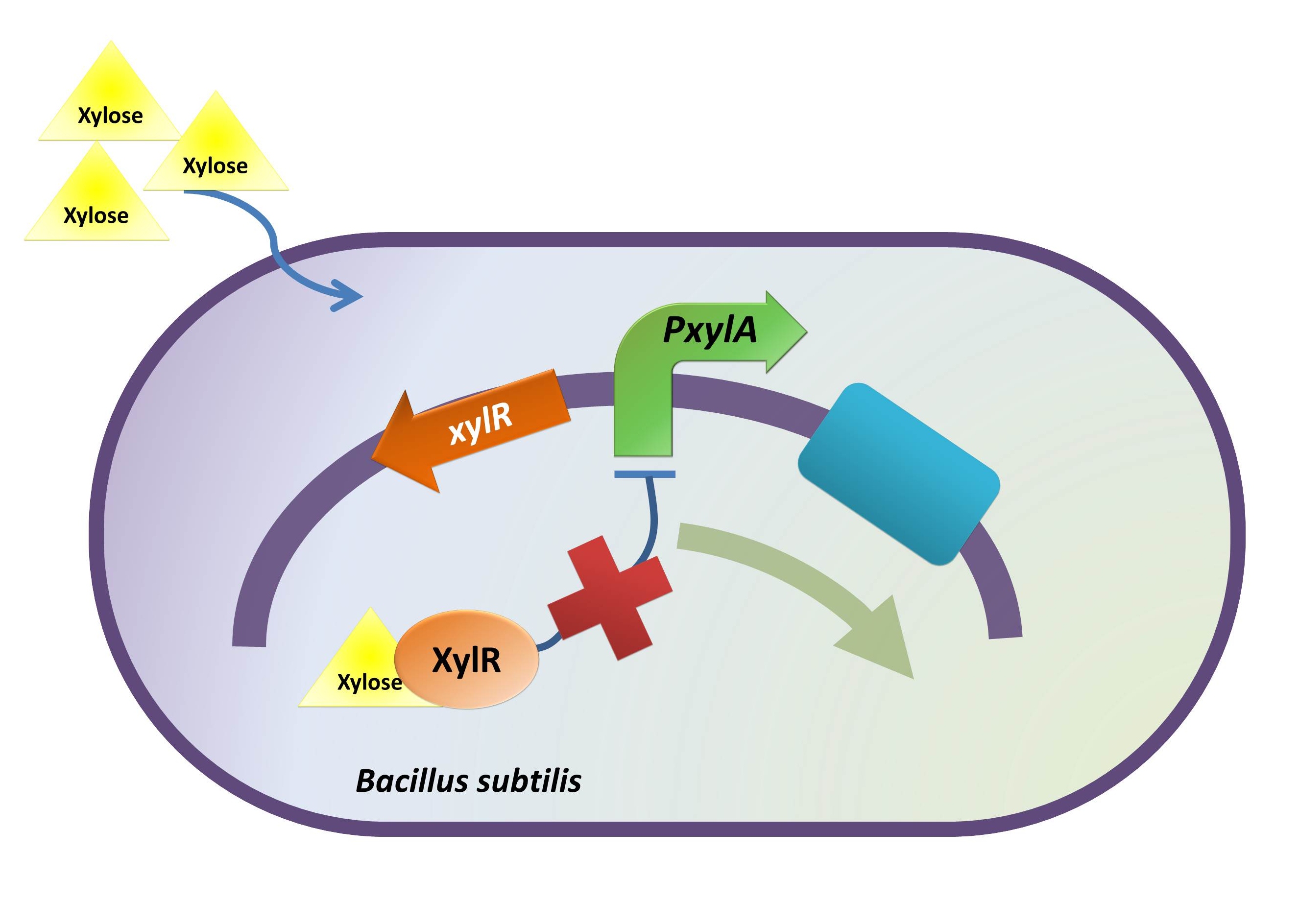Team:HKUST-Hong Kong/Module/Regulation and control
From 2012.igem.org
Regulation and Control Module
Overview:
Objective:
- To regulate the expression of BMP2 by a xylose inducible promoter. (Timing regulation)
- To control the overexpression of BMP2. (Dosage regulation)
Our Module in B. hercules:
- The inducible promoter. BBa_K733002
- The Cell Growth Inhibition Device. BBa_K733012
In the consideration of our B. hercules, one of our concerns is that our bacteria may secrete BMP2 before its binding to colon cancer cells. As a growth factor, although BMP2 triggers the apoptosis of colon cancer cell, it can also stimulate the proliferation of normal epithelial cells in digestive tract. (Zhang et al., 2012) Thus, we intend to introduce a regulatory timing system into our B. hercules by incorporating an inducible promoter into our device.
Admittedly, there are many different induction systems in Bacillus subtilis. However, to achieve the induction when our B. hercules is inside human colon, two conditions needed to take into consideration: first, the inducer should not normally exists in vivo, but can be created in human colon; secondly, the inducer should not vitiate the healthy state of the individual. Besides, although high efficiency of the induction is not strictly required, it will still be considerably helpful if could be achieved.
With those concerns in mind, xylose comes across our mind to be the inducer for our B. hercules. Xylose, as the main building block for hemicellulose, can only be found in plants. Largely absorbed in jejunum before reaching colon, xylose is not present in colon.(Yuasa et al., 1997) Besides, the absorption rate of xylose in colon is low indicated by Yuasa. Thus, well scheduled diet and medication can prevent the interaction of xylose and B. hercules in intestine, and induction can therefore be achieved by xylose delivered in enteric capsule or from anus.
Besides its rare existence in the human colon, xylose is an efficient inducer as for PxylA promoter. When ligated with gene bgaB, 200-fold induction was achieved 30 minutes after the induction of xylose. (Kim et al. 1996)
Considering the problems caused by the unexpected proliferation of normal colon cells induced by over-dose BMP2, a regulatory system is necessary for the dosage control of BMP2 expression.(Zhang et al., 2012)
In order to build this controlling system, we came up with a cell growth inhibition device to manage this task. Understanding that toxin-antitoxin operons exist abundantly in bacteria, we intend to link the expression of BMP2 with a toxin gene. However, the only existence of the toxin gene is not enough. Stabilization, to a certain extent, is necessary, so that our B. hercules will not die after a low level of BMP2 expression. And this short-term stabilization could be achieved by introducing the corresponding anti-toxin gene of the previous toxin gene.
In order to practically implement the ideas above, a toxin-antitoxin pair – YdcE and YdcD – is used. ydcE encodes an endoribonuclease – EndoA, which causes cell growth inhibition, regarded as "toxin" in this case. On the other hand, ydcD encodes YdcD (EndoAI), which counteracts the effect of EndoA and regarded as "anti-toxin". (Pellegrini, O. et al. 2005) By linking ydcE immediately after Bmp2 gene, and put ydcD after Ptms promoter, a relatively low efficient constitutive promoter, EndoA can be expressed simultaneously with the expression of BMP2 under the control of xylose inducible promoter, and cell growth inhibition will not occur until the produced EndoA outweighs the effect of accumulated YdcD (EndoAI).


Reference:
Zhang J, Ge Y, Sun L, Cao J, Wu Q, Guo L, Wang Z. Effect of Bone Morphogenetic Protein-2 on Proliferation and Apoptosis of Gastric Cancer Cells. Int J Med Sci 2012; 9(2):184-192.
Anti-tumor Molecule Secretion Module
Project
Wet Lab
Human Practice
 "
"




